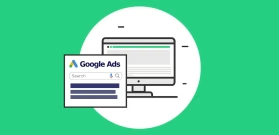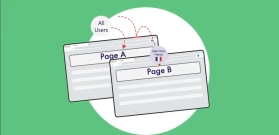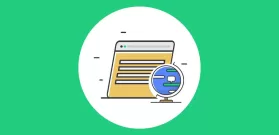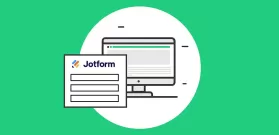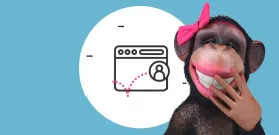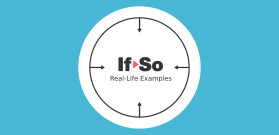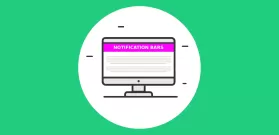The Magic of Personalized Landing Pages – Featuring 10 Real-Life Examples
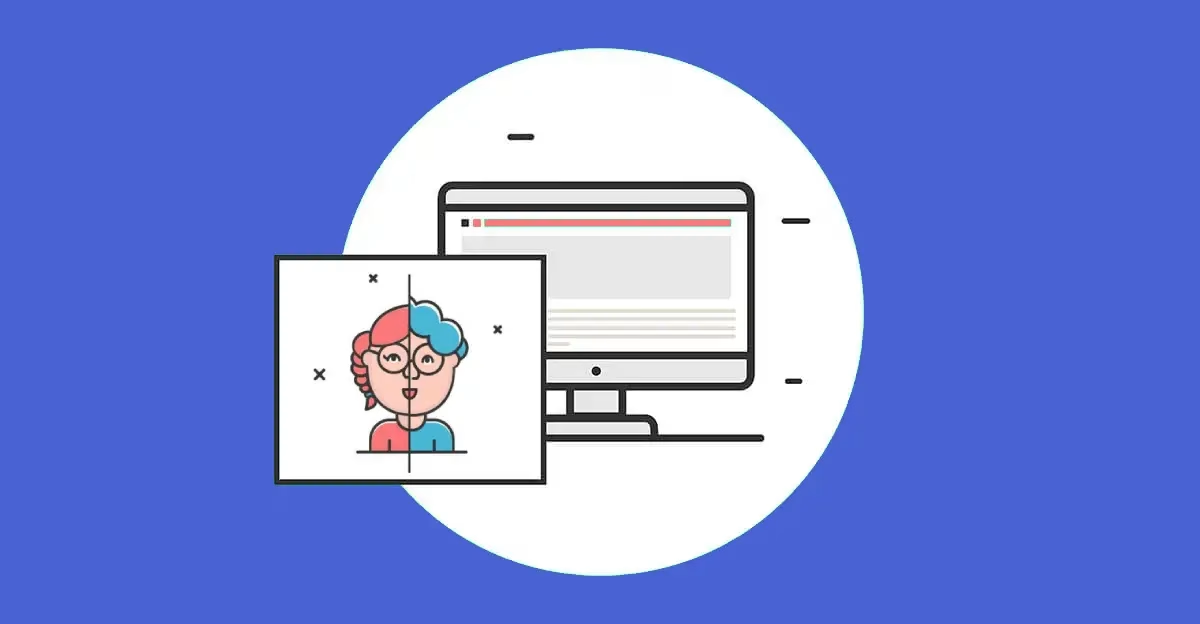
Unlock the Power of Personalized Landing Pages: How They Work and Why They Matter
Personalized landing pages are web pages designed to adapt to visitors based on their preferences, behaviors, or demographics. Instead of showing the same static content to everyone, they optimize the experience for different user segments—increasing the chances of conversion and making your brand more memorable.
More Than Just Geotargeting – 10 Real-World Examples of How Different Conditions Can Shape Your Landing Page
Personalization isn’t just about where your visitors are – it’s about delivering the right message at the right moment. By using dynamic content, you can create personalized landing pages based on time, behavior, device, and more, creating an experience that truly resonates.
Below are 10 practical examples of how different conditions can transform your page and drive engagement.
🌓 1. Time of Day (Morning/Night)
Your visitors’ needs and mindset often change depending on the time of day. By dynamically adjusting your landing page based on whether it’s morning or night, you can create a more engaging experience.
Think about it—someone browsing at 2 AM isn’t in the same mindset as someone starting their day with a fresh cup of coffee. A night-mode landing page with a dark, moonlit background and glowing text could say:
“It’s late—but it’s never too late to boost your website’s performance.”
Meanwhile, early risers might see something different:
“Good morning! Start your day with momentum—finish it with results.”
Level Up: Introduce a “Night Owl” or “Early Bird” deal with additional discounts or incentives.
🔄 2. Returning Visitors
Not all visitors are new. Some are coming back because something about your site caught their interest the first time. Recognizing them makes a big difference – why treat them like strangers when you can welcome them like old friends?
Instead of a generic greeting, returning visitors could see:
“You’re back! Ready to take the next step?”
Or, if you want to give them a little nudge:
“Good to see you again! Here’s 10% off to celebrate your return.”
People love being acknowledged, and a simple personalized touch can be the push they need to convert.
Power Play: Offer exclusive returning visitor discounts or highlight fresh content they might have missed.
📍 3. Location-Based Personalization
Where your visitors are browsing from can influence what they relate to. A visitor from New York and one from Sydney might respond differently to the same message. Why not make it feel local?
A simple tweak can instantly make the page more engaging:
“Your next great find, now available in [State Name]!”
Or tap into social proof:
“Join thousands from [State Name] who have already taken advantage of this opportunity.”
When people see something familiar, they pay attention.
Smart Strategy: Highlight region-specific testimonials or promotions tailored to their location. If you are using WordPress, a Geotargeting WordPress Plugin can help you set it up in minutes.
🔎 4. Google Ads Visitors
Visitors who arrive from a Google Ads campaign clicked for a reason. Reinforce that decision by making their landing page feel like a natural extension of the ad.
Instead of a generic landing page, greet them with something like:
“Welcome! You’ve clicked the right ad—let’s make your visit worth it.”
And if you want to boost conversions, throw in a little incentive:
“As an ad visitor, you get 10% off when you act now.”
They already showed intent. Now, make it count.
Pro Move: A simple yet highly effective trick is to match the landing page title to the user’s search term. This not only boosts conversion rates but can also improve page rankings and reduce advertising costs.
👤 5. User Name
Nothing feels more personal than seeing your own name. If you have access to a visitor’s name (through a logged-in session, CRM, or if the visitors arrives from an email campaign), use it to make their experience feel tailor-made.
Instead of a standard headline, try:
“Welcome back, [Name]!”
Or make it even more engaging:
“Your turn to take action, [Name]! See what you’ve been missing.”
A little personalization goes a long way in making visitors feel like the page was designed just for them.
Next-Level Tactic: Add a fun touch—such as a personalized greeting or a playful call-to-action that makes the experience feel unique.
For example:
“Looking forward to helping you achieve great things, [Name] the Magnificent!”
🐵 6. Exit Intent Pop-Up
Visitors leaving your site? Don’t let them go without a compelling reason to stay.
As they move toward closing the page, hit them with something unexpected:
“Wait! Before you go, here’s something special just for you.”
Maybe it’s a discount, an exclusive bonus, or a reminder of what they’re missing.
Go the Extra Mile: Test playful copy or animations to keep visitors engaged at the last second.
🗣 7. Browser Language Detection
Not everyone speaks the same language, and your landing page should reflect that. Unlike location-based personalization, which adapts to where the visitor is, browser language detection focuses on the visitor’s preferred language – regardless of where they’re browsing from.
Think about it -have you ever been abroad, walked into a business, and suddenly spotted a testimonial or recommendation from someone in your home country? That moment of familiarity builds instant trust. The browser language condition brings that same experience online.
By showing localized testimonials in a visitor’s language, you’re not just adapting to their words—you’re recognizing their cultural background, preferences, and expectations.
Insider Trick: While a WordPress Geolocation Redirect plugin can help you easily redirecting visitors to a different page, in many cases, adjusting key elements like testimonials and calls to action can achieve the same effect with much less effort. Seamless personalization is key.
⏳8. Countdown Timers
Nothing gets people moving like a deadline. When visitors see a ticking clock, hesitation fades, and action follows.
“This deal expires in 2 hours—act now!”
The urgency is real, and it works. Whether it’s a limited-time discount or an exclusive offer expiring soon, a countdown timer taps into the fear of missing out (FOMO) and encourages immediate decisions.
Countdowns can also be conditional, meaning they start when a visitor lands on the page rather than running on a fixed schedule. This ensures that every visitor experiences the urgency personally, making the offer feel more exclusive and relevant.
Power Move: Use action-based countdowns that trigger when a visitor takes a specific step—like adding a product to their cart or making a purchase—to create the perfect upsell opportunity:
“You’ve unlocked a special offer! Claim your exclusive discount in the next 10 minutes.”
🔗 9. Social Sharing & Referrals
Why limit engagement to just one visitor? A referral feature encourages them to bring a friend along, creating a more personal and engaging experience.
Instead of just sharing a generic link, visitors can personally invite someone by entering their friend’s name—making the interaction feel more direct and meaningful.
For example:
“[User’s Name] thought you’d love this—check it out!”
To add even more personality, you can include fun titles for both the referrer and their friend:
“Thanks, [Name] the Magnificent! [Friend’s Name] is going to love this.”
Level Up: Offer a bonus for both the referrer and their friend—it’s a win-win!
📱 10. Mobile vs. Desktop Visitors
Visitors on mobile browse differently than those on desktop, and what they’re looking for can vary depending on their device. Some products are naturally more suited for mobile purchases—like mobile apps, food delivery, or ride-sharing services, where the user is already on their phone and ready to take action. On the other hand, desktop software, complex design tools, and in-depth research products are more commonly purchased on a computer, where users can take their time and compare options.
Recognizing these differences allows you to fine-tune your landing page and call to action to feel more natural for each type of visitor.
For mobile users:
“Exclusive Mobile Deal: Save 15% Today!”
For those who might need a reminder later:
“Away from your computer? Let us remind you tomorrow!”
Smart Move: Adjust layouts for mobile visitors—smaller screens need faster, cleaner designs. Optimizing for device type doesn’t just improve usability—it helps guide visitors toward the most natural next step, making conversions feel effortless.
Now that we’ve seen how dynamic content powers personalized landing pages, let’s break down how to implement it step by step.
From Inspiration to Implementation: Understanding the Mechanics of Personalization
Now that we’ve explored real-life examples of how dynamic content can transform a landing page, we have a clearer picture of what personalized landing pages can do. But how do they actually work? Let’s dive into the theoretical part to understand the principles behind personalization and how to implement it effectively.
Why Personalized Landing Pages Matter: Driving Engagement and Conversions
Personalized landing pages speak directly to your audience, capturing attention immediately. When visitors feel recognized, they’re more likely to engage with your content. In return, this can lead to higher conversion rates. You can help potential customers navigate their journeys by presenting relevant information and offers.
Moreover, personalization enhances user experience significantly. A well-made landing page that aligns with visitors’ preferences and behaviors can make browsing smoother and drive them to take action.
And the best part? Personalized landing pages are designed to adapt. As user data evolves, so can your messaging and design elements. This way, you can keep the conversation fresh and engaging for returning visitors.
Essential Elements of a Winning Personalized Landing Page
A winning personalized landing page relies on key elements that work together to engage visitors and drive conversions. Here’s what matters most:
1. Captivating Headlines with Dynamic Messaging
Your headline is the first thing visitors see—it should immediately capture attention and set expectations for what’s ahead. Personalized headlines create an instant connection, making visitors more likely to stay and explore.
Whether it’s addressing their needs directly or reflecting their unique context, a well-crafted headline sets the tone for a compelling experience.
2. Tailored Calls-to-Action (CTAs) That Resonate
A well-crafted CTA guides visitors toward action. Use data like location or past interactions to make CTAs feel relevant.
For example, displaying CTAs in the visitor’s native language can improve engagement. A Spanish-speaking visitor might see “Descubre tu oferta exclusiva” instead of a generic English message.
Seeing familiar language immediately grabs attention, making the CTA feel more personal and increasing the likelihood of a response. It creates a sense of comfort and recognition, reducing friction in the decision-making process.
3. User-Specific Offers and Relevant Content
Use browsing history, purchase behavior, or engagement data to deliver personalized recommendations. If a visitor recently purchased a product, suggest complementary items rather than generic offers.
4. Visual Customization for a Dynamic Experience
Your landing page design should adapt dynamically based on visitor context. Visual elements play a crucial role in engagement, helping visitors feel like the page is made for them. A design that changes based on time, location, or special events creates a more immersive and relevant experience, making visitors more likely to stay, interact, and convert.
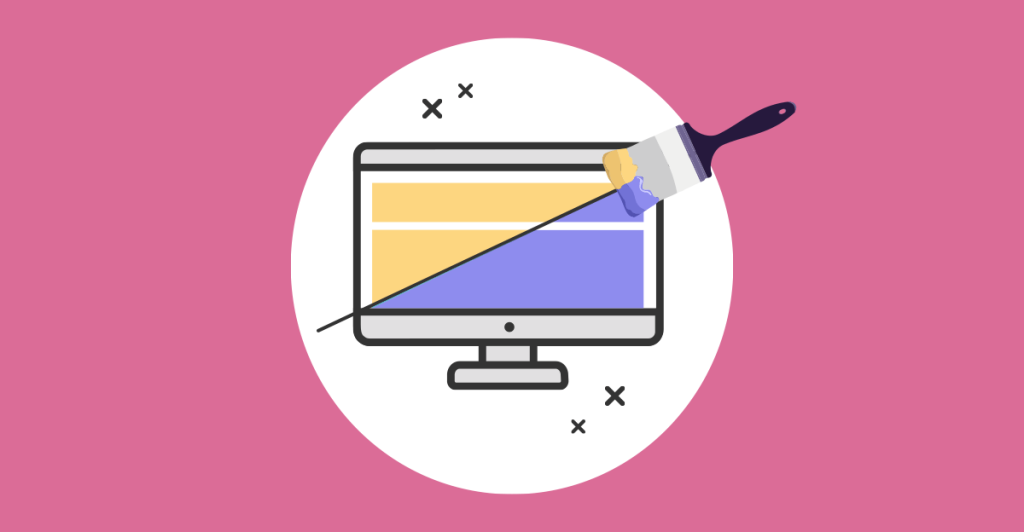
What You Can Customize:
- Holiday & Seasonal Themes – Update visuals for special occasions like Black Friday or Christmas.
- Time-Based Visuals – Show a bright theme in the morning and a dark mode at night.
- Business Hours Adaptation – Display notifications when your business is closed.
- Location-Based Personalization – Adjust images and messages based on a visitor’s region.
Learn more about conditional CSS
5. Building Trust with Social Proof and Testimonials
Seeing positive experiences from others builds trust and credibility—an essential factor in making personalized landing pages more effective. Display testimonials strategically – such as showing reviews in the visitor’s language or featuring feedback from customers in the same location.
By integrating these elements, your personalized landing page will feel more relevant, engaging, and effective at converting visitors into customers.
Step-by-Step: How to Build Effective Personalized Landing Pages
Building effective personalized landing pages involves a systematic approach.
Step 1: Define Your Personalization Goals
Decide what kind of personalization will make the biggest impact:
- Are you tailoring offers based on location?
- Do you want to adjust visuals based on the time of day?
- Should returning visitors see different messaging than first-time visitors?
Clear goals will help you set up the right dynamic elements.
Step 2: Segment Your Audience
Break down your audience based on factors like:
- Geolocation (e.g., showing region-specific promotions)
- Device Type (e.g., mobile users see a mobile-optimized CTA)
- Referral Source (e.g., a visitor from a Facebook ad sees a different offer than one from Google search)
- User Behavior (e.g., returning visitors see recently viewed products)
Step 3: Customize the Content & Design
Now, bring personalized landing pages to life with smart content and design adjustments. AI tools can make the process much easier, offering a variety of ideas tailored to your business.
- Headline & Messaging: Change text based on user data (e.g., “Welcome back, John!” or “Exclusive Deals for Runners”).
- Images & Backgrounds: Swap visuals depending on location, time of day, or seasonal events.
- Call-to-Action (CTA): Adjust the CTA based on user behavior (e.g., “Sign Up” for new visitors vs. “Continue Where You Left Off” for returning users).
Step 4: Implement Dynamic Content
Use a plugin to update content in real time. Options include:
- Dynamic text replacement for location-based offers
- Countdown timers for limited-time promotions
- Personalized recommendations based on previous interactions
Step 5: Track, A/B Test & Optimize
Personalization doesn’t work the same way for every audience. Run A/B tests to determine what drives the best results and continuously refine your approach.
Choosing the Right Dynamic Content Tool to Set Up Perfect Personalized Landing Pages
Building high-converting personalized landing pages is much easier when you have the right tool to automate and optimize the experience. A dynamic content solution should be powerful yet simple to use, allowing you to tailor experiences without technical complexity.
When selecting a tool, consider:
- Versatility – The number of conditions it supports and the types of content it can dynamically replace on your site.
- Ease of Use – A user-friendly setup that doesn’t require coding skills.
- Cache Compatibility – Ensures smooth performance without conflicts with caching systems.
- Optimization Features – Built-in A/B testing and analytics to refine personalization efforts over time.
The right tool doesn’t just make personalization possible—it makes it seamless, scalable, and effective in driving engagement and conversions.
By choosing the right tool, you ensure that personalization not only enhances user engagement but also seamlessly integrates with your existing workflow
Bringing It All Together: Build a High-Converting Personalized Landing Page
A personalized landing page is no longer just a nice-to-have—it’s a powerful tool that can dramatically improve user engagement and conversion rates. By implementing dynamic content strategies, you’re not just customizing a webpage; you’re crafting an experience that feels seamless, intuitive, and relevant to each visitor.
From adjusting content based on time of day to recognizing returning visitors, tailoring CTAs, and leveraging location-based personalization, every small tweak enhances the impact of personalized landing pages and brings your audience closer to taking action.
The more aligned your personalized landing page is with their needs, the more natural and effective the conversion process becomes.
Now it’s your turn. Whether you’re just starting or refining your approach, the right dynamic content tool will make personalization easier, scalable, and more impactful. Ready to transform your landing pages into high-converting experiences? Start personalizing today!
